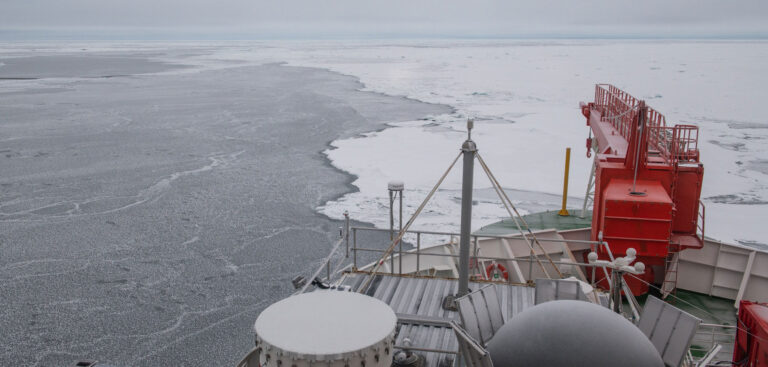A groundbreaking year-long international research project will change our understanding of the Arctic climate and how it impacts weather around the world, say scientists.
Researchers on board the German research vessel, RV Polarstern, have already begun to collect meteorological data from the polar region. The ship, which pulled out of the Norwegian port of Tromso in September, has now moored itself to an ice floe, where it will drift, locked into the Arctic ice, for the next 12 months.
Scientists taking part in the project – known as the Multidisciplinary drifting Observatory for the Study of Arctic Climate (MOSAiC) – have been launching weather balloons every six hours from the ship. According to Scientific American magazine, this will continue for the whole year – more than 1,400 balloon launches in total.
Scientists say the weather balloons, as well as a number of other monitoring technologies, will lift the veil on the Arctic climate, which has been little studied until now because of the difficulty of conducting research in this hostile and remote climate.
“We don’t understand key climate processes in the central Arctic, particularly in winter and spring, when the sea ice is so thick that even the best research icebreakers are locked out of this icy region,” Markus Rex, expedition head and an atmospheric scientist at the Alfred Wegener Institute, told Scientific American.
Among the Arctic climate phenomena scientists hope to understand better is something known as the temperature inversion, which refers to the fact that the atmosphere in the polar region gets warmer with height (the opposite of what happens elsewhere in the world).
As well helping to improve science’s understanding of the Arctic climate, it is hoped the expedition will provide a clearer a picture of the influence the Arctic has on global weather. This remains a contentious issue in meteorology and climate science.
While many scientists assume there is a strong causal relationship – with the so-called polar jet stream believed to be a key factor in how the Arctic climate interfaces with global weather – lack of data has left them unable to prove it. The MOSAiC scientists are hoping their project will change this.



